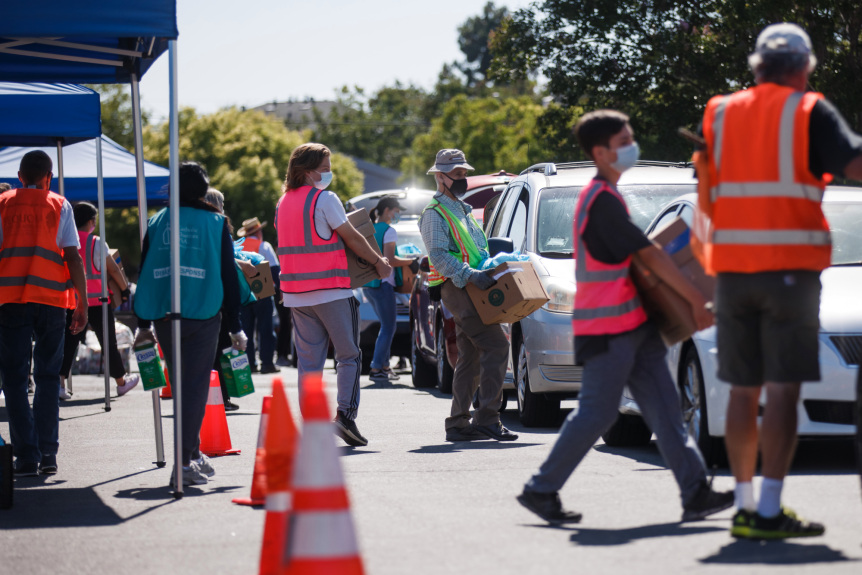How Santa Clara County non-profits and parishes came together to distribute 17 million meals

As COVID-19 spread across Santa Clara County in March 2020, local charities heard the first pleas for help and developed a new food distribution system that would get 17 million free meals to the community in the first year and a half of the pandemic.
Before the pandemic, Catholic Charities of Santa Clara County served an average of 40,000 people a year. But organizations including Second Harvest, Catholic Charities, and other members of Voluntary Organizations Active in Disaster predicted the impending hunger crisis. An estimated 153,600 jobs were lost in the county in March and April, 2020.
“In a single moment, so many people found themselves out of work and in need of help,” said Leslie Bacho, CEO of Second Harvest of Silicon Valley.

The food outreach started with Santa Clara University and St. Francis High School offering their vans, which were loaded with food from Second Harvest and driven by Catholic Charities staff to 300 homes every week. In the following months, the Diocese of San Jose offered nine parish parking lots for drive-through food distribution sites.
“Hunger and fear were definitely in the faces that we saw,” said Araceli Gonzales, disaster director for Catholic Charities of Santa Clara County.
Before every distribution, volunteers were given a speech encapsulating the philosophy of the immense project, Gonzales said.
“We don’t know the situation of the person in the car, we don’t know if they haven’t had a meal in two days, we don’t know if they got out of an abusive relationship, we don’t know if this is their first time ever asking for any assistance and they were wealthy,” said Gonzales. “All we can do is say ‘Thank you, God bless and please you come back.’”
During the pandemic, the drive-throughs alone handed out more than 900,000 boxes of food containing multiple meals, while 232,000 boxes were delivered to homes as the volunteer ranks grew from around 60 to over 180.
Rosa Valencia, a San Jose resident, depended on the food. Valencia, who has a disability, was on food stamps but it wasn’t enough for her household, which included three of her children and one grandchild.
At the grocery store, Valencia shelled out $200 after using her food stamps, surviving some days on beans and rice. So, every Friday she queued up in the parking lot of St. Lucy Catholic Parish in San Jose for boxes of fruit and vegetables, dried food, and meat.
If it wasn’t for the food distribution, Valencia said, she’d be rationing food for herself and her children. “This is a big help,” she said.
As Californians reentered the workforce, the number of visitors to the food distribution sites has decreased, but there’s still a long road ahead, said Gonzalez.
“It’s still going to be a long process for a lot of these families to get back to where they started,” said LaDonn R. DuBois, senior director of communications for Catholic Charities of Santa Clara County. “We know we’re in this for the long haul.”

